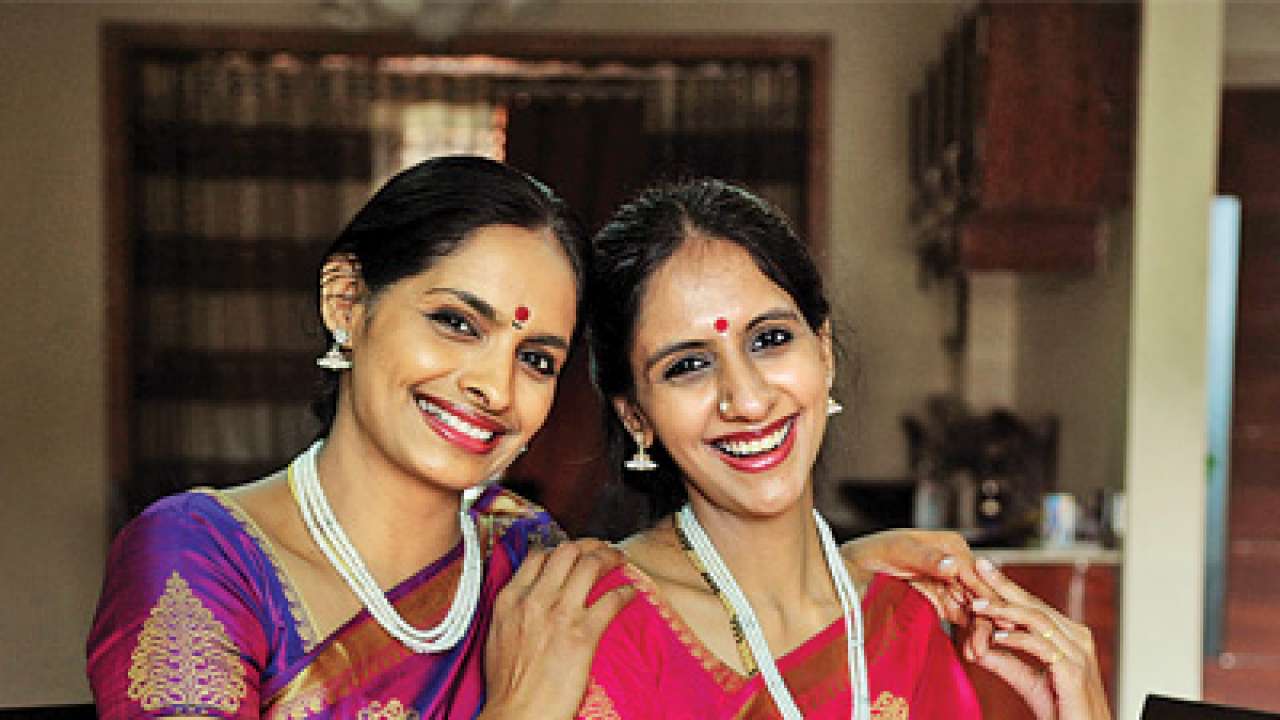
You've performed at concerts as violinists and vocalists worldwide. How does it feel being in Mumbai?
Ranjani (R): Well, it'll always feel very special. After all, this is where we grew up and were initiated into music. So there will always be a special feeling. And to perform in one of Asia's biggest auditoriums is great. Meeting friends, neighbours, family and extended family makes it an experience one looks forward to. It's like coming to our maika (maternal home).
Gayathri (G): You know we trained under violin maestro Sangeet Bhushan TS Krishnaswami at the Shanmukhananda Sangeetha Vidyalaya located in the same premises, so you know how it must feel to be here (laughs). This is not to say that we don't feel attached to Chennai where we are settled now, because it too has some great music culture.
Your musical journey began really early.
R: Our mother Meenakshi was a Carnatic vocalist herself, while our father N Balasubramanian was a great music aficionado. Even when we were babies in arms, we were taken to both Hindustani and Carnatic concerts, and that seems to have had its impact.
G: Our parents discovered our deep interest and understanding for music very early on and decided to send us to learn music. Since we lived in Matunga, the South Indian hub, we went to Shanmukhananda to learn.
And you began performing as violin duet artistes as early as 1986!
G: Yes, we were barely in our teens then, but the rigorous training under our guru TS Krishnaswami propelled us on to the concert stage as violinists. The adulation and love from audiences both here and abroad kept us going, and we didn't look back.
R: The violin, you see, is one of the most challenging instruments, and getting the bow and finger technique right can be very, very difficult. The player has to visualise notes and actually ensure they are touched as s/he goes along. This makes it easier for us to navigate complex compositions as vocalists too.
You have been accompanists to some really eminent leading artistes.
G: Yes. We've had the good fortune to accompany legends like DK Pattammal and M Balamuralikrishna. That helped us imbibe some of their wisdom too.
It's said that those who play instruments like the violin and sarangi find it easy to take to vocal music.
R: That could be the case given the nature of these instruments. We have benefited greatly from our violin discipline and it makes singing that much easier.
Is that why you switched?
R: See, we began vocal concerts in 1997 after training under Padma Bhushan Sangita Kala Acharya PS Narayanaswamy. We also learned quite a few devotional compositions from vocalist Seetha Narayanan.
How did Marathi abhangas become part of your repertoire?
R: A chance meeting with an amateur Hindustani vocalist in Chennai, Vishwas Shirgaonkar, a World Bank official in Washington DC, sparked our interest. We recorded some of his beautiful abhangas and gawalans and found ourselves mesmerised by the devotional pull of the compositions. Later we went to Kolhapur and trained under Appasaheb Deshpande, one of the late Bal Gandharva's leading disciples, as also from Manek Bhide (mother of Dr Ashwini Bhide-Deshpande).
Is the switch from Carnatic to Hindustani difficult while rendering abhangas or even composing as you have for both concerts and albums?
G: As Ranjani pointed out earlier, we've had an eclectic exposure to music from an early age. As opposed to those who get exposed to, say, Hindustani music after training in Carnatic for a few years and form their understanding of Hindustani from a perspective of Carnatic, we formed our perspectives on various genres without these constructs in our mind. This is only possible at a very young age, by the way. We have lived in Mumbai and had basic training in Marathi at school, so the language wasn't such a big issue.
R: The Carnatic genre is one of the most complex in the world. Once you've learned to perform by those exacting standards, it becomes easier imbibing other styles that may be a little less challenging.
Are there several practice sessions together? How do you know at which point one is going to improvise?
R: Artistes who've practised music for years develop an innate sense of such things and instinctively know them. Rarely, we do cue each other with eye contact.
G: We seldom practise together. Ultimately the creative way we sync with each other will not come across as organic if we do that.
Does the sibling rivalry dynamic play out between both of you?
G: I think the less I say about this, the better it is, because I'll end up being embarrassed. I am younger and have always started fights. As youngsters, this would sometimes even go till the concert stage. I think unless there is a feeling of respect and love for the fellow artiste, there can't be a good performance. Having said that, Ranjani, as the elder, is always more accommodating, even encouraging and giving me space when I take off on improvisations.
R: A competitive feeling is good because it brings out the best in us, but we keep it positive and remember to keep it complementary to each other.
Just like your saris?
G: I know (laughs). It has somehow become our trademark. In 1998, we went to a sari shop where I liked a beige sari with a black border-pallu. I turned around and saw Ranjani holding an identical one in a reverse combination. That started it off. It has now come to a point where we've become designers too, as we think of what colour will work with what theme and stuff like that.
R: While it's flattering that people notice what we're wearing, we can't lose sight of the fact that without our music, we wouldn't be here.